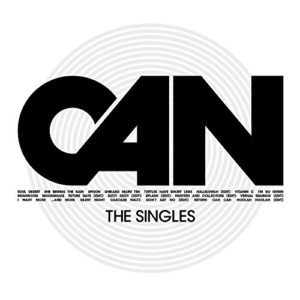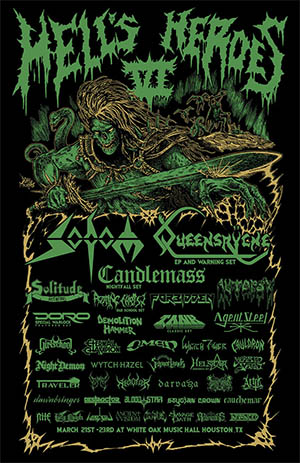 Do you know Can? They know you, whether you realize it or not. Their music is in your music, in your DNA.
Do you know Can? They know you, whether you realize it or not. Their music is in your music, in your DNA.
A few years ago, David Stubbs wrote the definitive history of German kosmische music, Future Days: Krautrock and the Birth of a Revolutionary New Music (2015). The book treated Can as important, but just one piece of the story, the second chapter dedicated to the band, sandwiched between Amon Düül II and Kraftwerk. Rob Young’s thesis, on the other hand, is that Can towers above their contemporaries. Nevermind that Kraftwerk achieved far greater commercial success, and Neu!, Cluster and Faust were hipper names to drop, at least in certain circles in the 90s. Nevermind that Can’s influences reach far and wide, from punk and post-punk to Brian Eno & David Byrne’s My Life In The Bush Of Ghosts (1981) and sampling culture, hip hop, Tortoise and Radiohead. Even if they were forgotten and influenced no one, what matters to me most is that they’re a fucking magnificent band in any context. Tracks from their peak work from 1971 to 1975 sound timeless, even fresh. I love that Rob Young also appreciates the music for what it is.
I became aware of Can due to an eerie, mysterious 1985 track by The Fall called “I Am Damo Suzuki.” I learned that was the name of Can’s singer during their peak period, but I was unable to hear the original because their albums simply were not available. I may have heard “Vitamin C,” “Soup,” or “I Want More” during some late-night listening to a local college radio station, but I had no idea what they were at the time. Loop covered “Mother Sky” in 1988 which whet my appetite, and I dug hard and deep through the used record stores, but came up with zilch. Luckily, the albums were issued on CD for the first time on their Spoon label in 1989, and I finally got to hear the glorious run of albums of Tago Mago (1971), Ege Bamyasi (1972), Future Days (1973), and Soon Over Babaluma (1974). I gradually filled out my collection with all the albums, even the considerably less great Out Of Reach (1978) and the reunion album Rite Time (1989).
The basics of Can’s story has been told numerous times since the 90s. Students of Karlheinz Stockhausen with backgrounds in classical (György Ligeti, Pierre Boulez) and jazz (Ornette Coleman, Albert Ayler, John Coltrane) got together and organically evolved to a new sort of avant rock, influenced not only by The Velvet Underground and film soundtracks, but also James Brown, electric era Miles Davis, Fela Kuti, Silver Apples, Pink Floyd and Captain Beefheart. From the earliest tracks in 1968, released later as Delay (originally meant to be called Prepared To Meet Thy Pnoom), the band sounded like no one else. Coming out of the psychedelic era, their music was not expansive like space rock and prog, but seemed to deconstruct the DNA of rock’s heartbeat, stripping rhythm down to bare bones, stream-of-consciousness lyrics from both Malcolm Mooney and Damo Suzuki that suggest an inward journey. It made all kinds of sense that they named their studio Inner Space.
“Inner Space: could any phrase be more appropriate, more suggestive of Can’s destination and destiny? The opposite direction from outer space, in contrast to the tendency towards ‘kosmische’, or cosmic, rock perpetrated by many German acts such as Tangerine Dream, Cluster and Ash Ra Tempel several years later. It suggested a retreat to a psychological state, a self-examination, a hermetic environment, a laboratory of the mind. It is possible that, while in New York, Irmin heard about or even saw Andy Warhol’s film Outer and Inner Space – premiered in January 1966 – and the phrase lodged in his mind.”
Along with the vocalists, Holger Czukay, Jaki Liebezeit, Irmin Schmidt and Michael Karoli were all deeply weird, unique individuals, never cut out to be rock stars, at least as conceived in the traditional sense. It doesn’t seem that they consciously tried to avoid mainstream popularity. They simply had no clue how to play that game. I laughed at loud at this passage:
“…he wrongfoots the interviewer’s expectations that he should act as a spokesman for politically disaffected youth. Instead, he attempts a McLuhanite deconstruction of the Fourth Estate. ‘TV is interested in the opinions of beat musicians in politics because it knows they have nothing to say, or a confused message,’ he says. ‘They are not interested in anything that has a clear socialist message, but they know they are not going to get it … Television knows that only a sound bite can be included. “
Intellectuals to the core, they were unintentionally “difficult” interview subjects, yet at the same time earnest and down to earth, at least in terms of how their creative process involved more instinct than thinking.
According to my Kindle, I highlighted over 120 passages in the book. And that’s even before getting to the second part by Irmin Schmidt. Assembled as a collage with snippets from various interviews with modern musicians, filmmakers and artists, it feels to me more of an appendix rather than an essential part of the book. The interview with The Fall’s Mark E. Smith was amusing, but hearing a bunch of people talk about how they were influenced by Can gets old. If anything, after the losses of Czukay and Liebezeit last year, it helps ward off the melancholy to read some contributions from the sole remaining original member. I’m sure there’s a few gems of insight hidden in the final pages which I’ll get to eventually, but to me, the key part of the book is by Rob Young. Essential.
 Further listening: Intimidated by the band’s large-ish catalog? Last year’s The Singles compilation is a great place to start, including more manageable edits of some sprawling tracks, plus some great non-album singles like “Turtles Have Short Legs.” Though if you’re a true Can geek, you’ll want to hear everything while reading the book, including The Lost Tapes box set and Unlimited Edition, which includes some of their global music experiments in the Ethnological Forgery Series tracks.
Further listening: Intimidated by the band’s large-ish catalog? Last year’s The Singles compilation is a great place to start, including more manageable edits of some sprawling tracks, plus some great non-album singles like “Turtles Have Short Legs.” Though if you’re a true Can geek, you’ll want to hear everything while reading the book, including The Lost Tapes box set and Unlimited Edition, which includes some of their global music experiments in the Ethnological Forgery Series tracks.
The chaotic, sometimes frightening and challenging Tago Mago is often cited by critics as their best. They would be wrong. Can’s hot streak was just starting to roll,  distilling a more disciplined, powerful vision on Ege Bamyasi, taking a Balaeric vacation on the watery Future Days, then lifting off to space with Soon Over Babaluma. With its intricate, textured rhythms and sounds inspired by Nigerian Juju, it was a big influence on Talking Heads’ Remain In Light among other things. I think it’s a close contender with Ege Bamyasi as their best. I also have a fondness for the reggae-tinged Saw Delight (1977).
distilling a more disciplined, powerful vision on Ege Bamyasi, taking a Balaeric vacation on the watery Future Days, then lifting off to space with Soon Over Babaluma. With its intricate, textured rhythms and sounds inspired by Nigerian Juju, it was a big influence on Talking Heads’ Remain In Light among other things. I think it’s a close contender with Ege Bamyasi as their best. I also have a fondness for the reggae-tinged Saw Delight (1977).
“Like Tago Mago and Future Days, Babaluma is inexhaustible; a hundred listenings in, and you still find new worlds. “Dizzy Dizzy” and “Come Sta, La Luna” are Can at their most telepathic and tactile. The Mandelbrot whorls and 7th dimensional involutions of “Chain Reaction/Quantum Physics” are the deepest psychedelic grooves I know outside early 70s Miles. Humour, poignancy, awe, groove, Dada, intimacy, immensity – sometimes I wonder why I bother listening to anything else. Anticipates (or pre-empts): the Fourth World pan-Globalism of Talking Heads’ Remain In Light, Byrne/Eno’s My Life In The Bush Of Ghosts, Jon Hassell, the avant-funk of PiL and The Pop Group, The Raincoats, 23 Skidoo, AR Kane’s oceanic rock, even some rap and rave.” — Simon Reynolds, THE WIRE’s THE HUNDRED BEST RECORDS OF ALL TIME

March 29, 2024
Fester’s Lucky 13: 1994
January 4, 2024
Fester’s Lucky 13: 1989
December 1, 2023
Fester’s Lucky 13: 2023 Year-End Summary



